Pogo 8.50
Sailboat specifications
The Pogo 8.50 is a 27’11” (8.5m) cruiser-racer sailboat designed by Pierre Rolland (France). She was built between 1999 and 2010 by Pogo Structures (France) with 187 hulls completed.
Pogo 8.50's main features
- Model
- Pogo 8.50
- Hull type
- Monohull
- Category
- Cruiser-racer sailboat
- Sailboat builder
- Sailboat designer
- Sailboat range
- Country
- France
- Construction
- Hull and deck: GRP (glass reinforced polyester)
- Number of hulls built
- 187
- First built hull
- 1999
- Last built hull
- 2010
- Appendages
- Keel : fin with bulb
- Helm
- Twin tillers
- Rudder
- Twin spade rudders
- Unsinkable
- Yes
- Trailerable
- No
- EC design categoryiThe CE design category indicates the ability to cope with certain weather conditions (the sailboat is designed for these conditions)
A: Wind < force 9, Waves < 10m
B: Wind < force 8, Waves < 8m
C: Wind < force 6, Waves < 4m
D: Wind < force 4, Waves < 0,5m - A
- Standard public price ex. VAT (indicative only)
- N/A €
Pogo 8.50's main dimensions
- Hull length
- 27’ 11”8.5 m
- Waterline length
- 27’ 2”8.3 m
- Beam (width)
- 11’ 10”3.6 m
- Draft
- 5’ 8”1.75 m
- Light displacement (MLC)
- 6173 lb2800 kg
- Ballast weight
- 1874 lb850 kg
- Ballast type
- Steel fin with lead bulb
- French customs tonnage
- 7.86 Tx
Pogo 8.50's rig and sails
- Upwind sail area
- 570 ft²53 m²
- Downwind sail area
- 1184 ft²110 m²
- Mainsail area
- 280 ft²26 m²
- Genoa area
- 291 ft²27 m²
- Symmetric spinnaker area
- 75 ft²7 m²
- Asymmetric spinnaker area
- 904 ft²84 m²
- Gennaker area
- 43 ft²4 m²
- IiFore triangle height (from mast foot to fore stay top attachment)
- 39’ 11”12.17 m
- JiFore triangle base (from mast foot to bottom of forestay)
- 10’ 2”3.1 m
- PiMainsail hoist measurement (from tack to head)
- 36’ 8”11.2 m
- EiMainsail foot measurement (from tack to clew)
- 12’ 7”3.85 m
- Rigging type
- Sloop Marconi 9/10
- Mast configuration
- Keel stepped mast
- Rotating spars
- No
- Number of levels of spreaders
- 2
- Spreaders angle
- Swept-back
- Spars construction
- Aluminum spars
- Standing rigging
- 1x19 strand wire
Pogo 8.50's performances
- HN (French rating)iHN or "Handicap Nationale" is an empirical rating system used in France allowing various monohulls, of different sizes and designs, to race each other fairly. It is particularly suitable for cruiser and cruiser-racer. Therefore, by comparing these values, we can have an indication of the relative speed of 2 boats.
- 22.5
- Upwind sail area to displacementiThe ratio sail area to displacement is obtained by dividing the sail area by the boat's displaced volume to the power two-thirds.
The ratio sail area to displacement can be used to compare the relative sail plan of different sailboats no matter what their size.
Upwind: under 18 the ratio indicates a cruise oriented sailboat with limited performances especially in light wind, while over 25 it indicates a fast sailboat. - 287 ft²/T26.68 m²/T
- Downwind sail area to displacementiThe ratio sail area to displacement is obtained by dividing the sail area by the boat's displaced volume to the power two-thirds.
The ratio sail area to displacement can be used to compare the relative sail plan of different sailboats no matter what their size. - 596 ft²/T55.37 m²/T
- Displacement-length ratio (DLR)iThe Displacement Length Ratio (DLR) is a figure that points out the boat's weight compared to its waterline length. The DLR is obtained by dividing the boat's displacement in tons by the cube of one one-hundredth of the waterline length (in feet).
The DLR can be used to compare the relative mass of different sailboats no matter what their length:
a DLR less than 180 is indicative of a really light sailboat (race boat made for planning), while a DLR greater than 300 is indicative of a heavy cruising sailboat. - 139
- Ballast ratioiThe Ballast ratio is an indicator of stability; it is obtained by dividing the boat's displacement by the mass of the ballast. Since the stability depends also of the hull shapes and the position of the center of gravity, only the boats with similar ballast arrangements and hull shapes should be compared.
The higher the ballast ratio is, the greater is the stability. - 30 %
- Critical hull speediAs a ship moves in the water, it creates standing waves that oppose its movement. This effect increases dramatically the resistance when the boat reaches a speed-length ratio (speed-length ratio is the ratio between the speed in knots and the square root of the waterline length in feet) of about 1.2 (corresponding to a Froude Number of 0.35) . This very sharp rise in resistance, between speed-length ratio of 1.2 to 1.5, is insurmountable for heavy sailboats and so becomes an apparent barrier. This leads to the concept of "hull speed".
The hull speed is obtained by multiplying the square root of the waterline length (in feet) by 1.34. - 6.99 knots
Pogo 8.50's auxiliary engine
- Engine(s)
- 1 inboard engine
- Fuel type
- Diesel
Pogo 8.50's accommodations and layout
- Cockpit
- Open aft cockpit
- Cabin(s)
- 1
- Berth(s) (min./max.)
- 4 / 6
- Maximum headroom
- 6’ 1”1.87 m
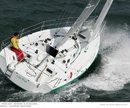

Pogo Structures Pogo 8.50 - - 1/5
Picture extracted from the commercial documentation © Pogo Structures
Picture extracted from the commercial documentation © Pogo Structures
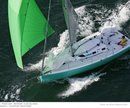

Pogo Structures Pogo 8.50 sailing - - 2/5
Picture extracted from the commercial documentation © Pogo Structures
Picture extracted from the commercial documentation © Pogo Structures
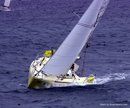

Pogo Structures Pogo 8.50 sailing - - 3/5
Picture extracted from the commercial documentation © Pogo Structures
Picture extracted from the commercial documentation © Pogo Structures
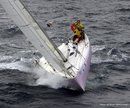

Pogo Structures Pogo 8.50 sailing - - 4/5
Picture extracted from the commercial documentation © Pogo Structures
Picture extracted from the commercial documentation © Pogo Structures
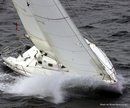

Pogo Structures Pogo 8.50 sailing - - 5/5
Picture extracted from the commercial documentation © Pogo Structures
Picture extracted from the commercial documentation © Pogo Structures
Similar sailboats that may interest you:
Sailboats
First built hull
Hull length
2012
27’ 5”8.35 m
2003
31’ 6”9.6 m
2017
32’9.75 m
1994
29’ 6”8.98 m
2017
40’12.2 m
1971
30’9.14 m
1990
26’7.93 m
1987
27’ 2”8.3 m
2002
27’ 2”8.3 m
1997
28’ 8”8.75 m
2013
29’ 2”8.9 m
2005
29’ 11”9.12 m
2009
31’ 8”9.65 m
1990
30’9.14 m
1997
31’ 2”9.5 m